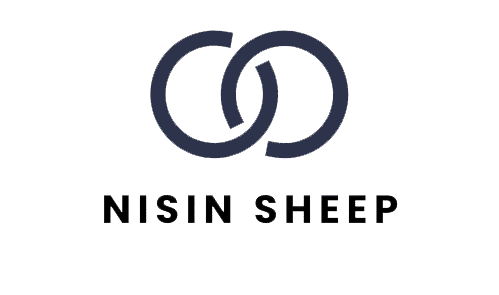Deep within the Arctic Circle, where the Scandinavian Mountains carve their rugged silhouette against a sky often painted with the ethereal dance of the Aurora Borealis, lies a concept rather than a pinpoint on a map: Wattinen. To search for it on a standard cartographic service is to embark on a wild goose chase; you will find hints, a river, a vague area, but no town, no village, not even a clearly defined cluster of homesteads. Wattinen is not so much a place you find, but a state of being you stumble upon—a whispered secret of Swedish Lapland, a testament to the profound silence and raw, unmediated wilderness that still exists in Europe’s far north.
This elusive name belongs to a scattered collection of traditional fäbodar (seasonal pasture farms) and a handful of year-round residences nestled in the valley of the Wattinäven river, approximately 30 kilometres west of the slightly more populous Arjeplog. Its ambiguity is its essence. Wattinen is less a destination and more an experience; a symbol of a vanishing way of life, a sanctuary for solitude, and a challenging, breathtaking lesson in humanity’s relationship with nature.
The Historical Echo: Life of the Fäbod
To understand Wattinen, one must first understand the fäbod system, a cultural practice dating back to the Middle Ages that shaped the agrarian life of inland Sweden and Norway. During the short, intense summer, when the sun barely dips below the horizon (the period of the Midnight Sun), farmers would take their livestock—primarily cows, but also goats and sheep—to these remote pasturelands. The women, young people, and often the elderly would move with the animals, living in simple log cabins (fäbodstugor) from May until September.
The purpose was twofold: to allow the hayfields around the main village to grow undisturbed for the crucial winter harvest, and to let the cattle graze on the rich, varied grasses and herbs of the high forests, which in turn produced uniquely flavoured milk and dairy products. This was a life of immense toil and profound connection. Days were spent milking, making cheese (fäbodost), butter, and a fermented milk called surmjölk, all while guarding the animals from predators like bears and wolverines.
Wattinen was, and for a few, still is, one of these fäbod areas. The silence that a modern visitor finds so overwhelming was, for the fäbod folk, filled with the sounds of their labour: the rhythmic ping of a cowbell, the crackle of the fire, the gentle hiss of milk in a pail. It was a life dictated not by clocks or calendars, but by the needs of the animals and the turning of the seasons. This historical echo is the bedrock of Wattinen’s character. The old cabins, some meticulously maintained, others slowly being reclaimed by the forest, stand as silent monuments to a resilient and self-sufficient culture.
The Geography of Solitude
Reaching Wattinen is an expedition in itself. You leave the paved road near the village of Slagnäs, and venture onto a winding, gravelly track that snakes its way through a dense tapestry of pine, spruce, and birch forest. The journey is a gradual shedding of the modern world. Phone signals fade. The noise of traffic is replaced by the whisper of the wind and the occasional call of a bird. The landscape opens up to reveal vast marshes, mirror-like tarns, and the ever-present, rolling mountains.
The Wattinäven river is the lifeblood of the valley, a crystal-clear waterway teeming with grayling and trout. It carves its way through the landscape, its course a defining feature of the area. The terrain is a classic example of the Alpine biome of northern Scandinavia: ancient, glaciated, and demanding respect. This is not a curated wilderness for gentle strolls. This is a land where the weather can change in an instant, where mosquitoes cloud the air in summer, and where the winter brings temperatures that can plunge below -30°C and a darkness relieved only by the stars and the aurora.
It is this very harshness that defines Wattinen’s allure. The solitude here is not empty; it is dense, palpable. It forces introspection. In the absence of external stimuli, the mind turns inward. The simple acts of chopping wood for the stove, fetching water from the river, or watching a storm roll in over the mountains become profound, meditative activities. Wattinen offers a radical disconnect to facilitate a deeper reconnect—with oneself, with one’s companions, and with the fundamental rhythms of the natural world.
A Modern-Day Refuge and a Cultural Crossroads
While the traditional fäbod life has dwindled, Wattinen has not been frozen in time. It has evolved, finding new purpose in the 21st century. The old cabins have been discovered and restored by a diverse group of people: artists seeking inspiration, writers craving silence, entrepreneurs from Stockholm looking for a digital detox, and wilderness guides who understand the value of such pristine environments.
This has created a fascinating modern community—a sparse, seasonal, and eclectic one. It is a community built on mutual respect for the land and for each other’s solitude. Neighbours might be kilometres apart, but connections are strong, forged in the shared understanding of what it takes to live here. Help with a broken-down vehicle, shared supplies when the road is snowed in, or simply a cup of coffee by the fire—these interactions are meaningful precisely because they are not taken for granted.
For the Sámi, the indigenous people of Lapland, this region has always been part of their ancestral lands, used for reindeer herding as the seasons dictate. The presence of reindeer, moving freely through the forests and over the mountains, is a constant reminder of a culture even older than the fäbod system, one that is intrinsically woven into the fabric of this place. Wattinen, therefore, exists at a cultural crossroads, where the history of Nordic settlers and the enduring heritage of the Sámi people overlap, both rooted in a deep dependence on and respect for the Arctic wilderness.
The Symphony of the Seasons
To know Wattinen is to experience it through the dramatic filter of its seasons. Each one transforms the valley completely, offering a distinct movement in its annual symphony.
- Summer: A brief, explosive celebration of life. The Midnight Sun bathes the landscape in a perpetual golden hour, and the flora and fauna erupt in a race against time. The marshes bloom with cotton grass, and the air is thick with the scent of warm pine and damp earth. This is the time for fishing, for foraging for cloudberries and mushrooms, and for hiking under a sun that never sets.
- Autumn (Höst): The most dramatic and poignant season. The birch forests turn a brilliant, fiery gold, creating a stunning contrast against the dark green pines. The air becomes crisp, the light slants low and sharp, and a sense of urgency returns as animals prepare for winter and the last of the seasonal residents close their cabins. It is a season of breathtaking beauty and melancholic anticipation.
- Winter: The great silence. Snow blankets everything, muffling sound and simplifying the landscape into monochrome elegance. The river may freeze, and the sun disappears for weeks during the polar night (mörketiden). But this darkness is illuminated by the stars, which shine with an unbelievable clarity, and the Aurora Borealis, which dances across the sky in silent, green ribbons. Life retreats inwards, centred around the warmth of a wood stove.
- Spring (Vår): A slow, wet, and powerful awakening. The snow melts, swelling the rivers and waterfalls to a thunderous roar. The light returns with a vengeance, and the first signs of green appear. It is a messy, chaotic, and hopeful time, full of the promise of another summer.
The Fragile Future
The future of places like Wattinen hangs in a delicate balance. On one hand, there is a growing appreciation for such refuges of silence and wildness, a recognition of their value for mental well-being and ecological integrity. This attracts responsible tourism and individuals committed to preservation.
On the other hand, threats loom. Climate change is being felt acutely in the Arctic, with warmer winters disrupting ecosystems and the habits of both wildlife and people. The pressure for resource extraction, from mining to forestry, always exists on the periphery. The greatest challenge, perhaps, is to protect the very solitude that defines Wattinen without putting it behind a paywall or turning it into a curated “wilderness experience” that destroys its authenticity.
Wattinen endures not as a museum piece, but as a living, breathing landscape. It is a reminder that there are still places where humanity is a guest, not a manager. It is a call to slow down, to listen to the wind in the pines and the water flowing over stone, to remember a rhythm of life older than the internet and more immediate than the news cycle. To go to Wattinen is to embark on a pilgrimage to the edge of the map, and to return, inevitably, slightly changed—carrying a piece of its profound and uncharted silence within you.

